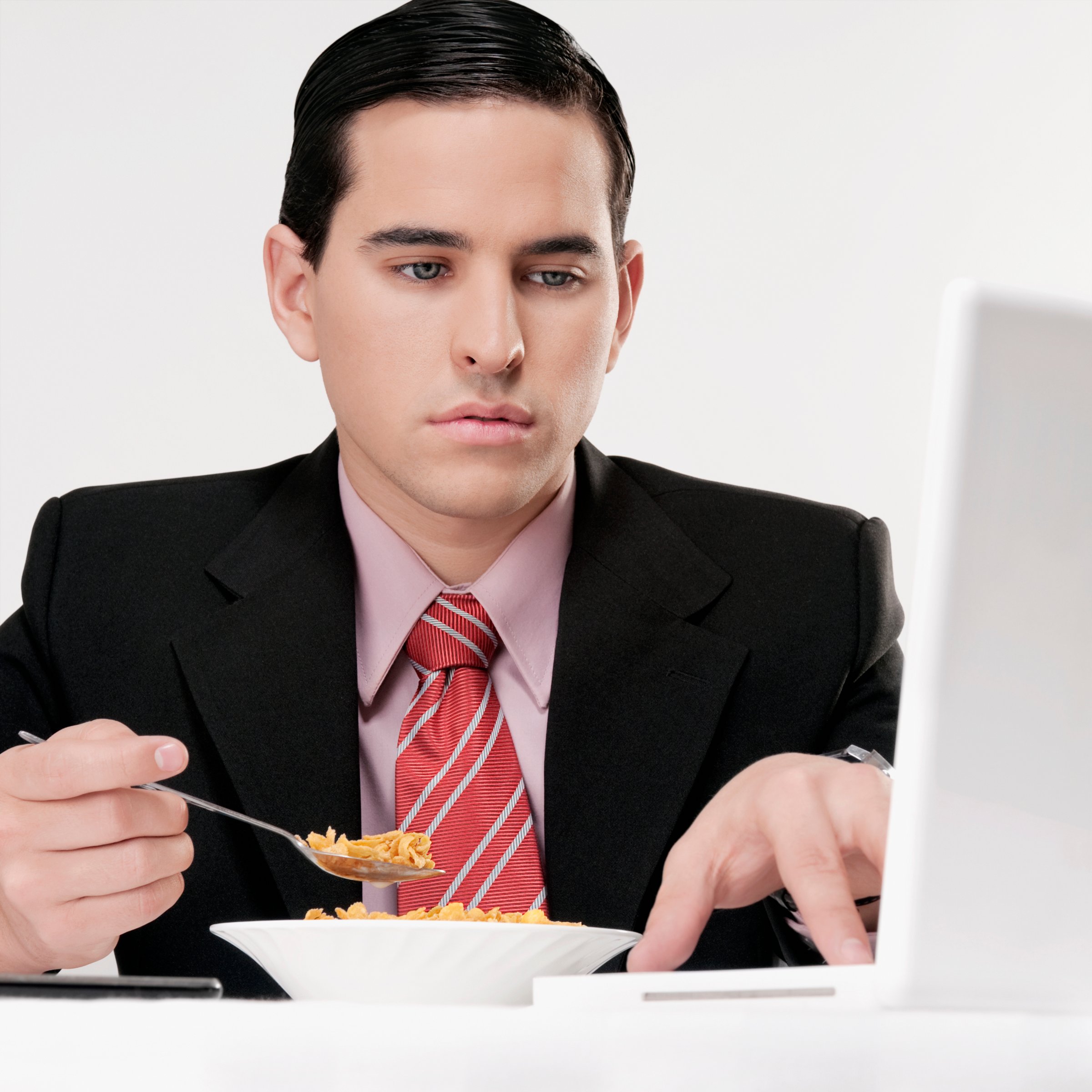
We eat solo about half of the time, according to a recent report. We dine alone 60% of the time at breakfast, 55% of the time at lunch, and up to 70% of the time when eating snacks. The solitary dining trend is due in part to on-the-go lifestyles, as well as the fact that nearly one third of households consist of just one person.
Whether you live alone or with your significant other or family, you may find yourself eating in a different way when you dine by yourself. Specifically, if you’re like many of my clients, you’re probably falling into some unhealthy eating traps. Here are five common dine-alone conundrums, along with practical ways to thwart them.
Health.com: 10 Weight Loss Mistakes Everyone Makes
Relying on processed convenience food
I’ve had numerous clients tell me that they don’t make meals from scratch when they dine alone, because they think, ‘why bother going to the trouble just for one person?’ As a result, they find themselves relying on frozen dinners or packaged products, and that quality difference can negatively affect your waistline. One recent study found that we burn about 50% more calories metabolizing whole foods versus processed foods. In other words, it’s not just about the total calories you consume; some prep and cooking time is a worthy investment, even for a solo meal. To keep it fresh, simple, and relatively fast, consider whipping up breakfast for dinner. You can sauté fresh veggies like tomatoes, onion, spinach, and mushrooms in low sodium organic veggie broth with garlic and herbs, and then pair it with either scrambled organic eggs or mashed white beans. Serve this over a small portion of healthy starch, such as quinoa or brown rice, and top with sliced avocado for healthy fat.
Health.com: 14 Ways to Cut Portions Without Feeling Hungry
Making too much
One of the biggest challenges many of my clients face when dining solo is making more than they need, which results in eating extra portions. I know it’s really a pain, or sometimes impossible, to make just a half cup of quinoa, for example. So if you cook more than you need for a single meal, keep a BPA-free storage container at the ready to stash your surplus in the fridge. And to check yourself, consider pulling out your measuring cups and spoons. Eating just 20% more than you need meal after meal can keep you about 20 pounds heavier–so while quality food rules, managing quantity is still key for weight control.
Eating while distracted
Eating alone often involves eating while doing something else–watching TV, checking email, reading, or surfing the web. And distracted eating is a major setup for overeating. When you aren’t paying attention, it’s easy to become disconnected from how much you’re eating, or how full you feel. And when you’re out of touch with the eating experience–not noticing the aromas, flavors, and textures because you’re multitasking–you’re more likely to feel unsatisfied, which can lead to post-meal snacking. I know it may feel awkward, but when dining alone, try to sit at a table and just eat. You may be surprised at how much more you enjoy your meal, and how much more satisfied you feel. In fact, many people have told me that establishing this habit resulted in getting excited about cooking again, so they could experiment with new recipes or seasonings.
Health.com: 10 Types of Hunger and How to Control Them
Gobbling too fast
Since dining alone isn’t social, you may be tempted to rush through a meal, in order to get onto your next task. But in addition to potentially triggering bloating and acid reflux, speed eating is a recipe for weight gain. One study of 3,000 people found that fast eaters were 84% more likely to be overweight. Set a goal to simply slow down; put your utensil or food down between bites, take a few breaths between forkfuls, and chew more thoroughly.
Mindless nibbling
Another common pitfall associated with eating solo is mindlessly nibbling, especially on snacks. One of my clients who often worked from home found herself grabbing whatever was within reach throughout the day, an apple from the fruit bowl, one of her son’s granola bars or hubby’s energy bars, a handful of jarred nuts…. If you’re in the same boat, the best remedy is to keep food out of your sightline, and schedule your meals and snacks. When this client began working from a desk rather than a kitchen stool, and set her cell phone alarm for a designated lunch and afternoon snack time, the extra noshing went away, and so did the excess pounds.
Health.com: A Slacker’s Guide to Losing Weight Without Trying
More Must-Reads from TIME
- Donald Trump Is TIME's 2024 Person of the Year
- Why We Chose Trump as Person of the Year
- Is Intermittent Fasting Good or Bad for You?
- The 100 Must-Read Books of 2024
- The 20 Best Christmas TV Episodes
- Column: If Optimism Feels Ridiculous Now, Try Hope
- The Future of Climate Action Is Trade Policy
- Merle Bombardieri Is Helping People Make the Baby Decision
Contact us at letters@time.com